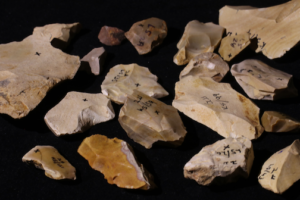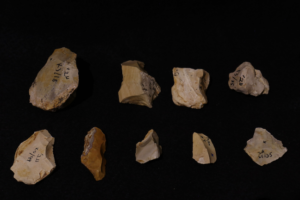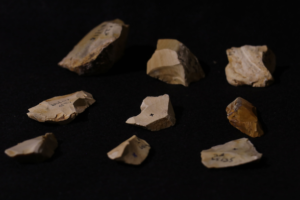
PROCEEDINGS OF THE NATIONAL ACADEMY OF SCIENCES—Researchers uncover evidence of fire at a 1-million-year-old archaeological site in Israel. Identification of fire at early hominin sites typically relies on visual assessments of physical alterations associated with fire. Filipe Natalio and colleagues combined spectroscopic techniques and machine learning to estimate the heat exposure of flint tools and faunal remains lacking visual indications of heat exposure from Evron Quarry, Israel, a Lower Paleolithic site dated to 1,000,000 to 800,000 years ago. The authors assessed the heat exposure of 26 flint tools using UV Raman spectroscopy and a deep learning model trained on modern flint materials heated to known temperatures. Fourier-transform infrared spectroscopy revealed the heat exposure of 87 faunal remains and associated sediments. The authors found that the flint tools were heated to a wide range of temperatures with no spatial patterning associated with temperature variability. The authors identified 13 tusk fragments that had been heated to temperatures above 600 °C. However, the sediments associated with the tusk fragments had not experienced temperatures above 400 °C. The authors suggest that hominin fire use is a possible explanation for the observed patterns of heat exposure. According to the authors, the methods could be used to identify nonvisual evidence of fire use at other Lower Paleolithic sites.
_________________________________

Above and below: Stone tools from Evron Quarry, Israel. Filipe Natalio and Zane Stepka
_________________________________

_________________________________

_________________________________
Article Source: PNAS news release.
*“Hidden signatures of early fire at Evron Quarry (1.0 to 0.8 Mya),” by Zane Stepka, Ido Azuri, Liora Kolska Horwitz, Michael Chazan, and Filipe Natalio.
_________________________________
Advertisement





